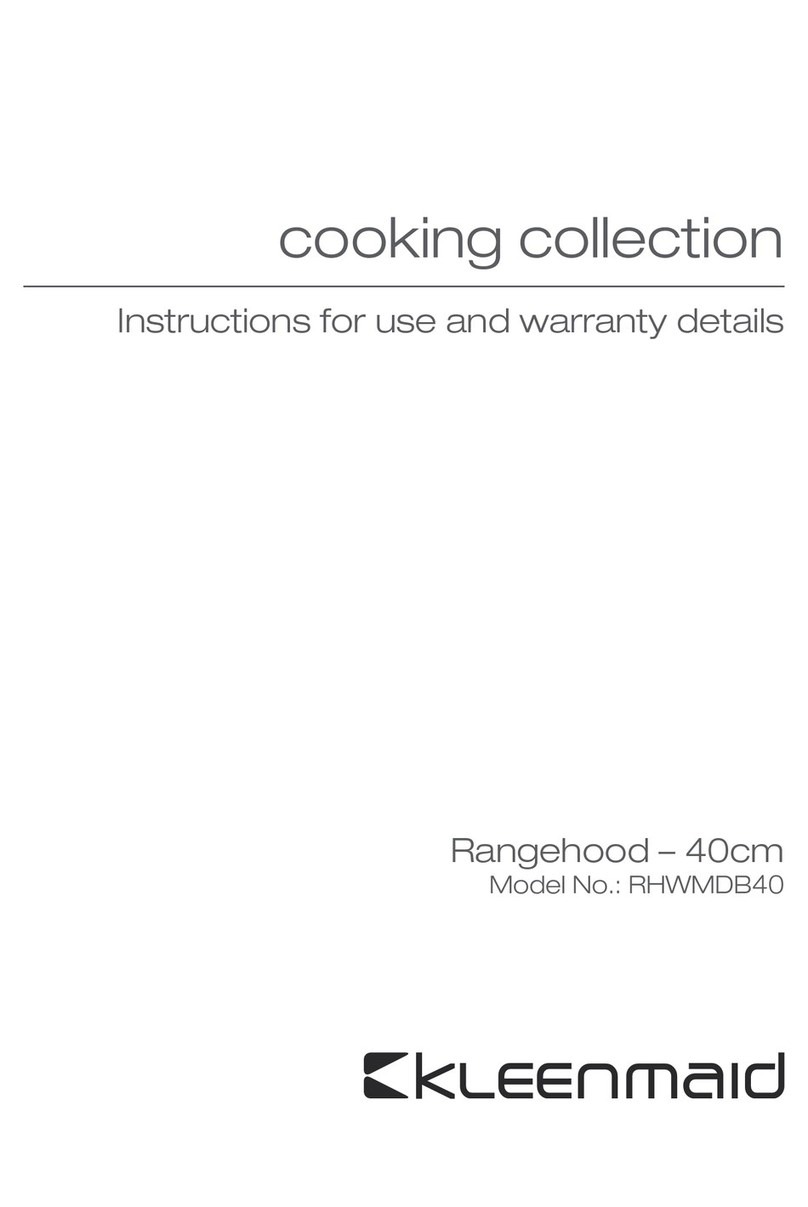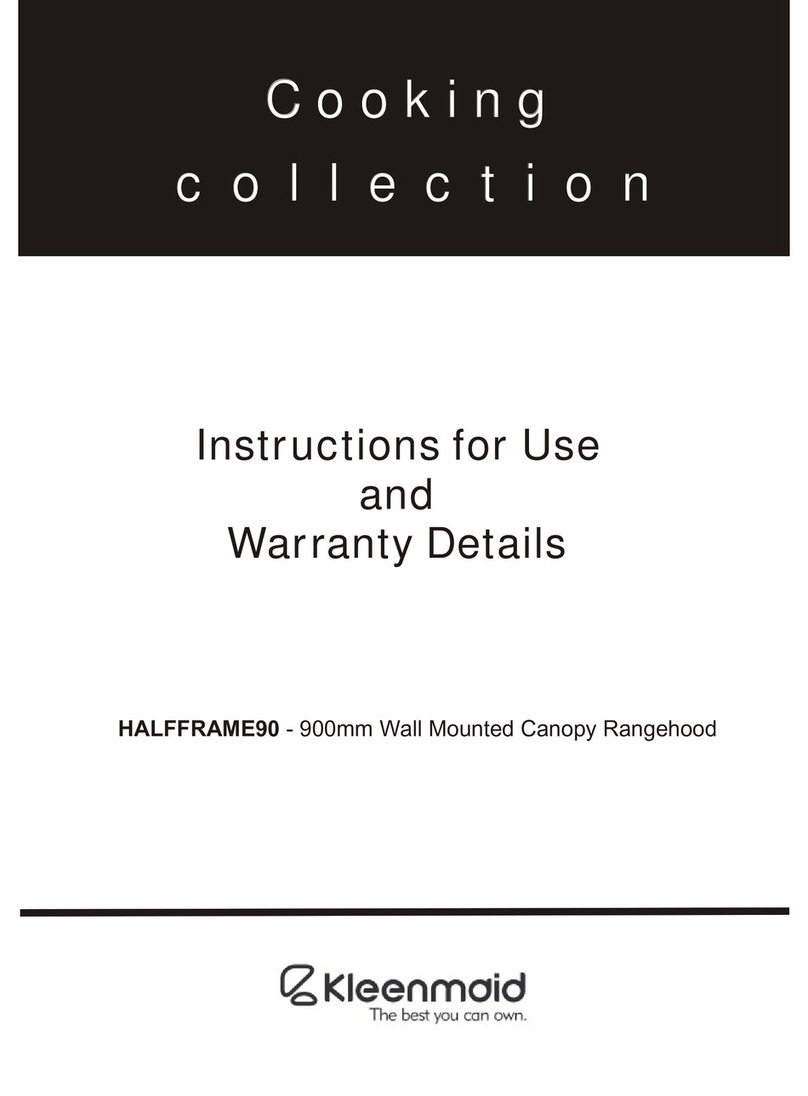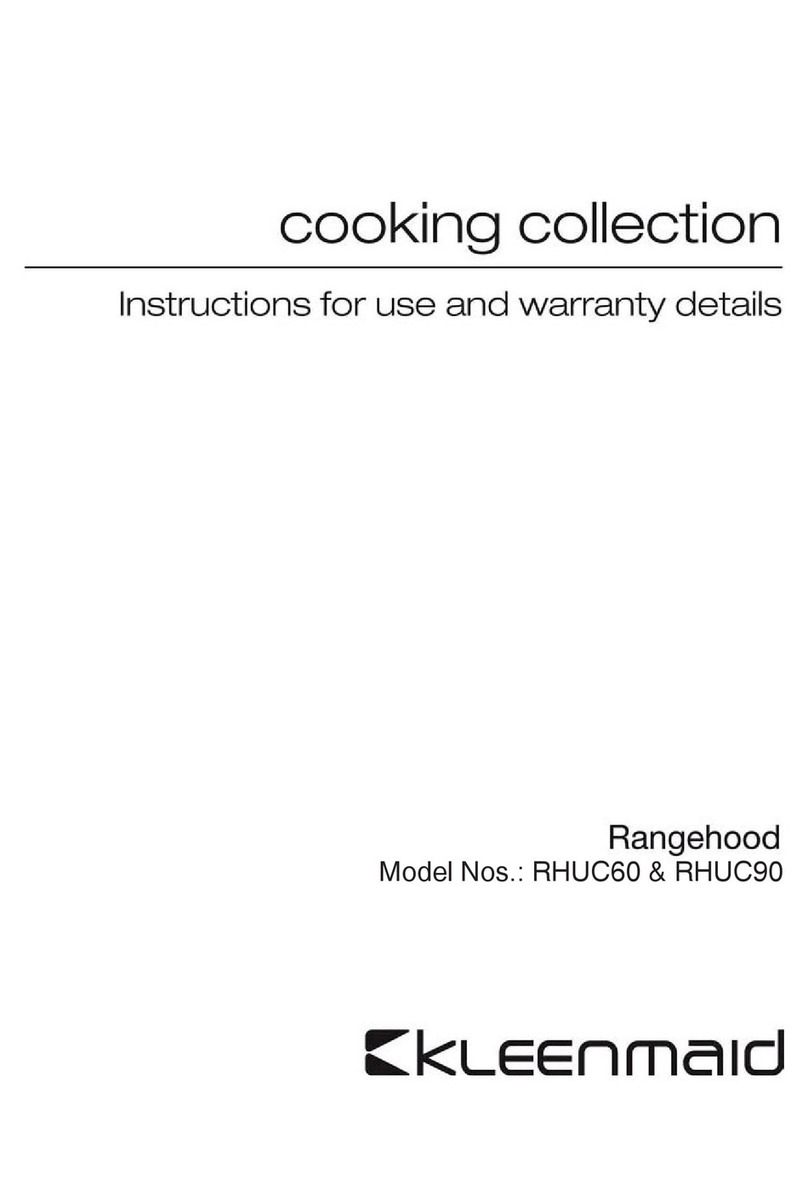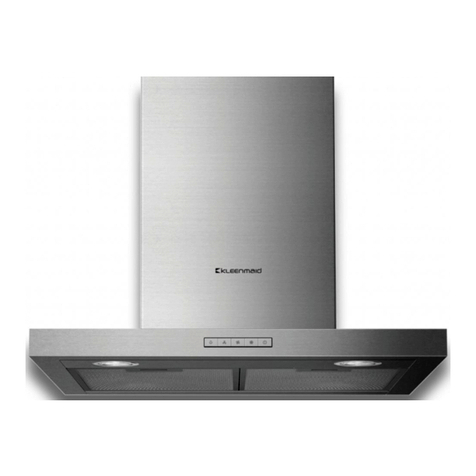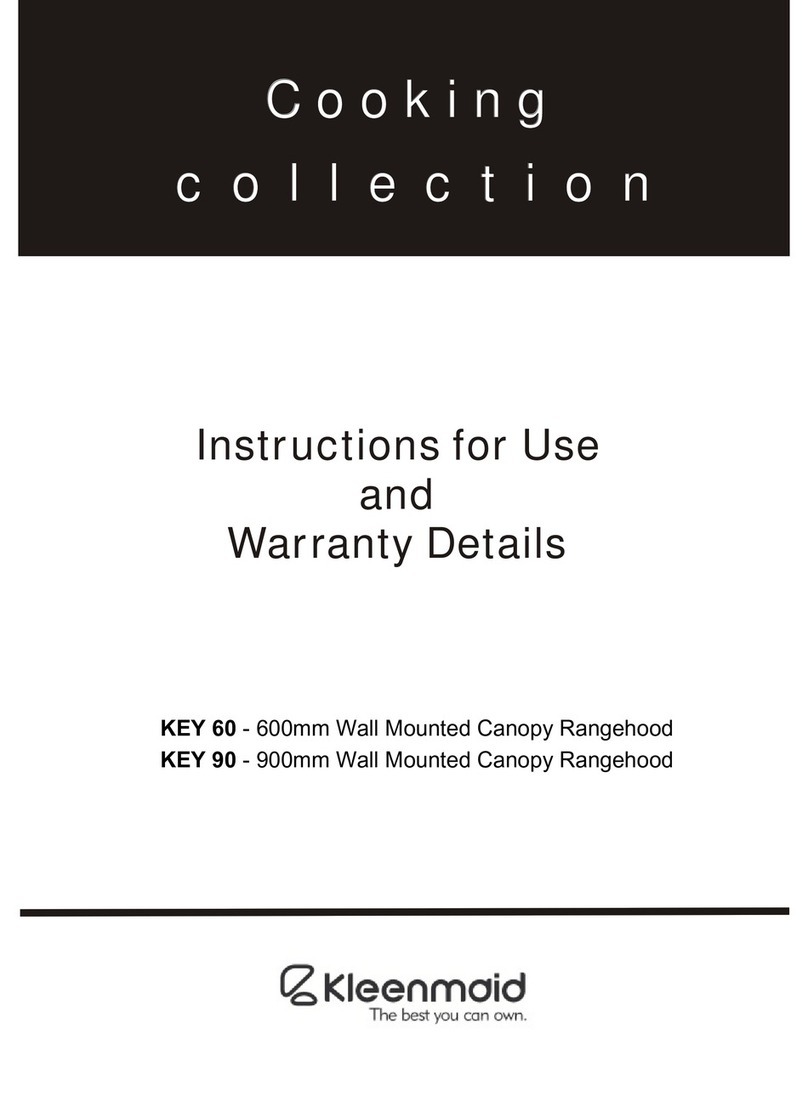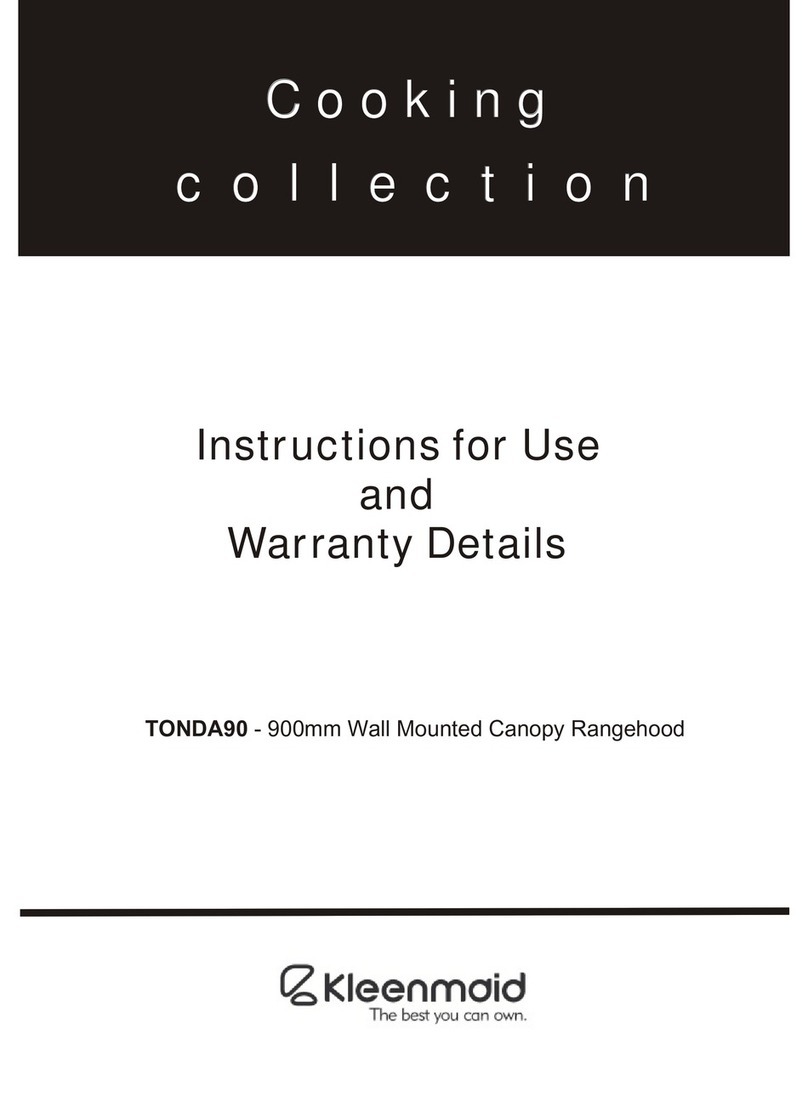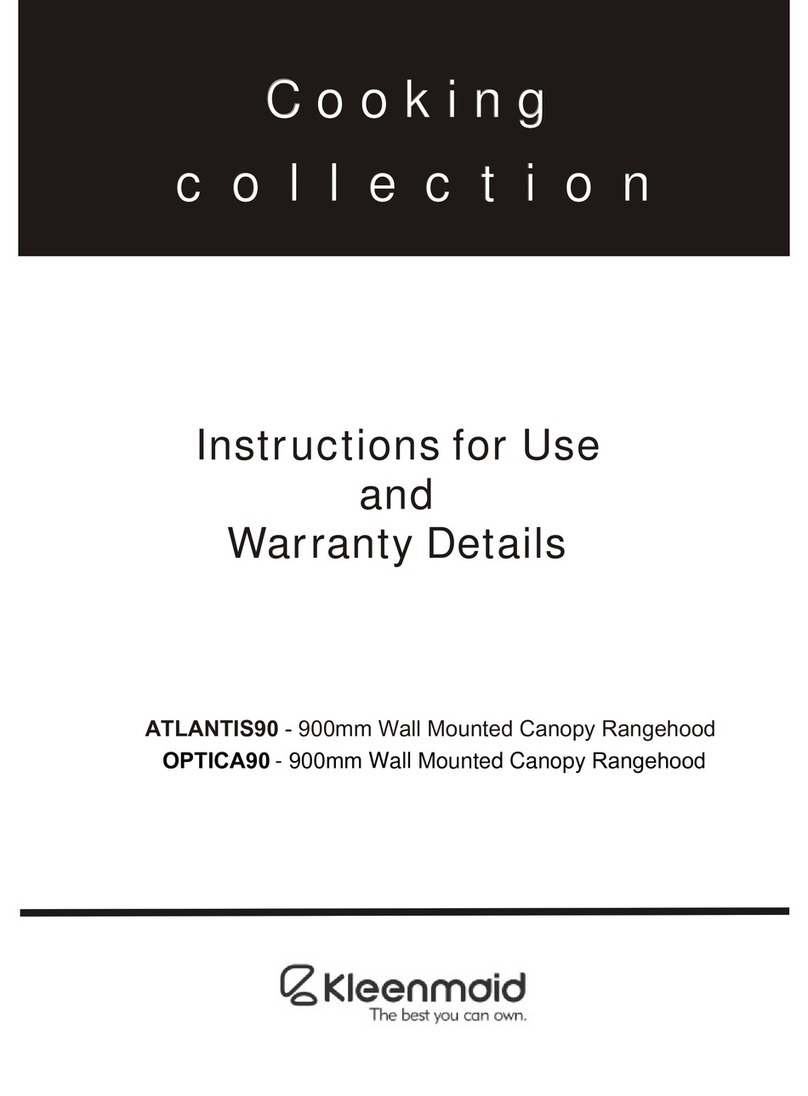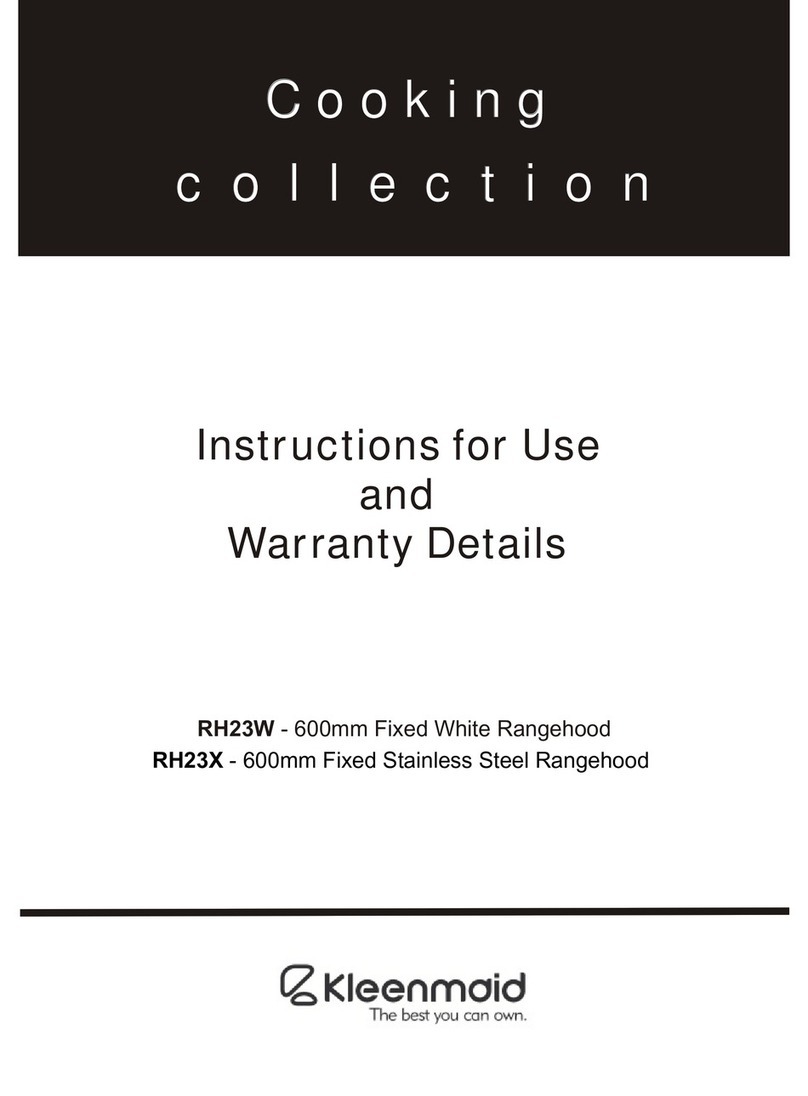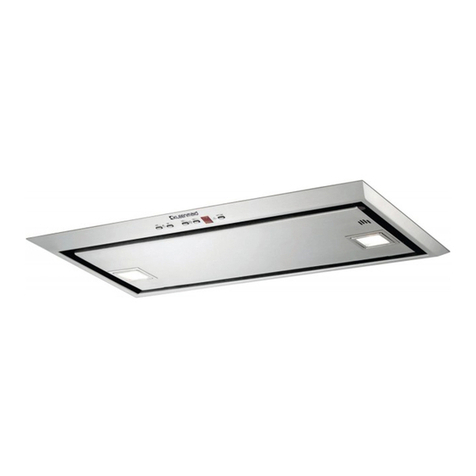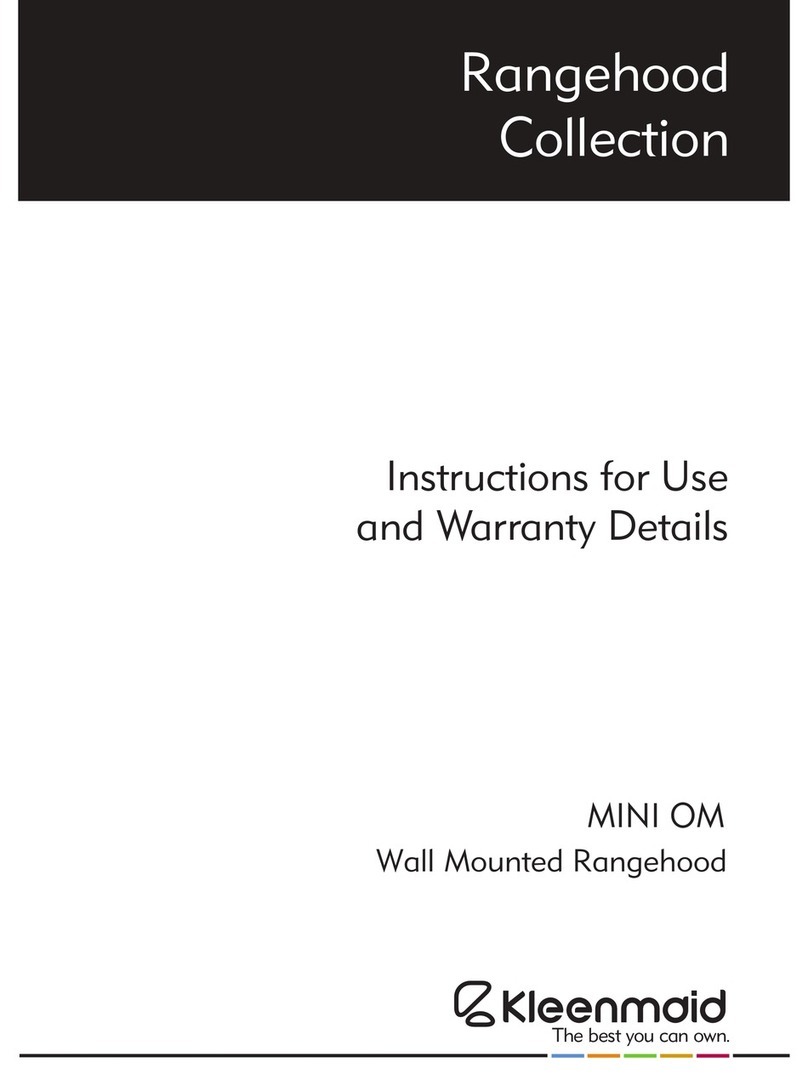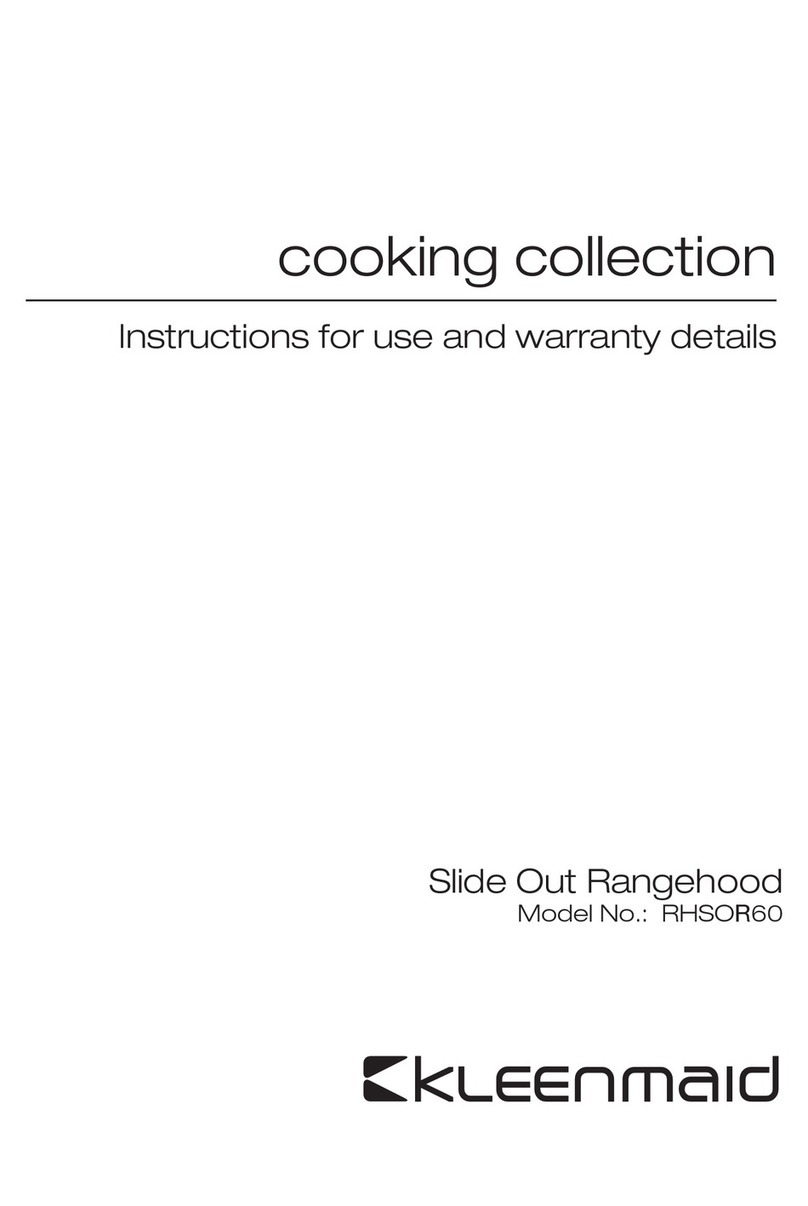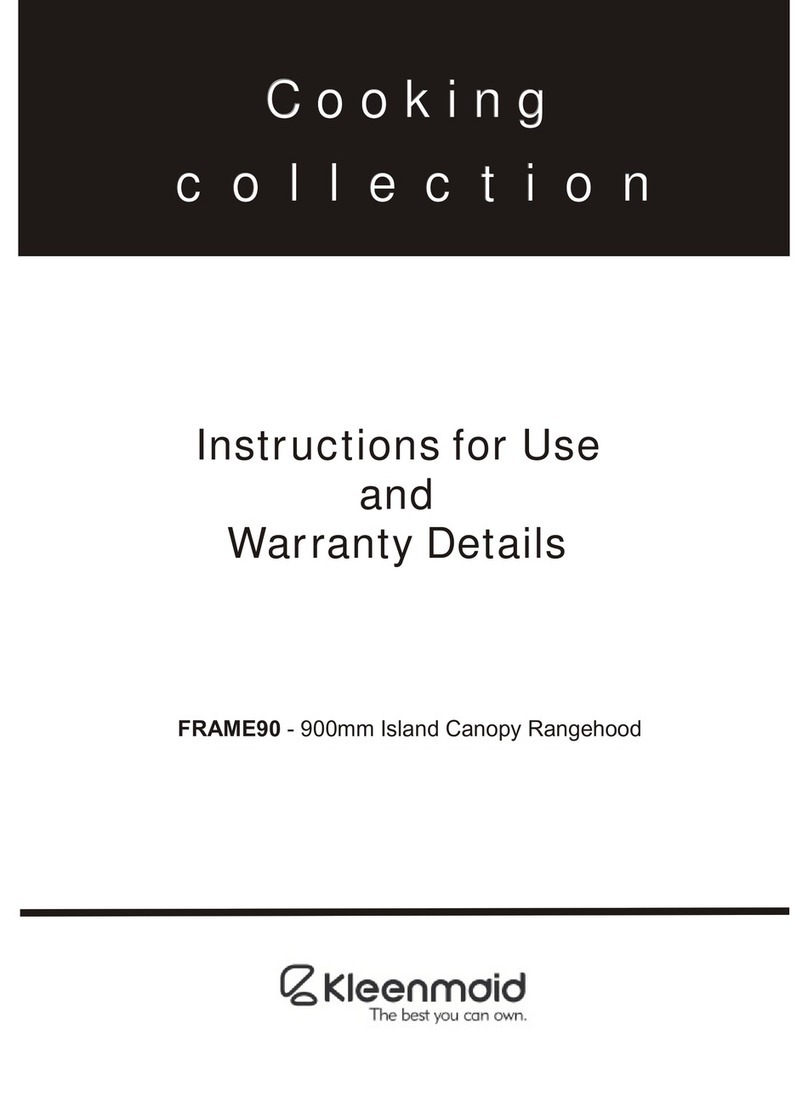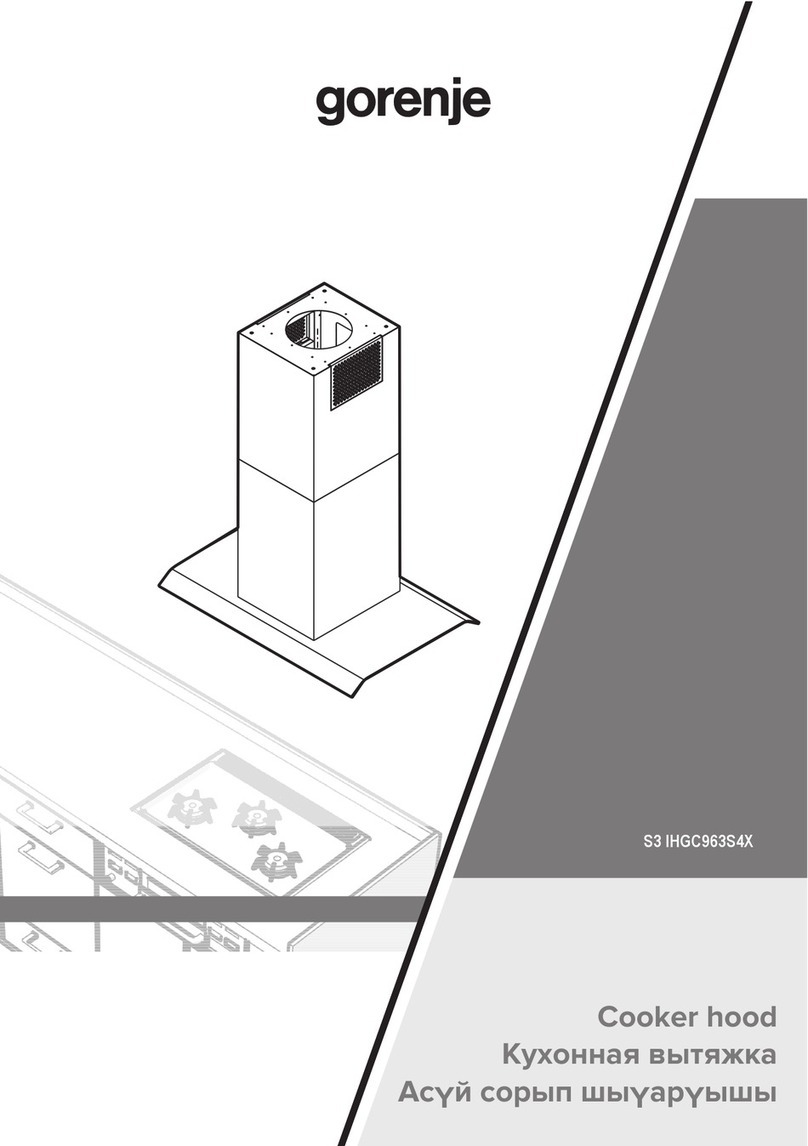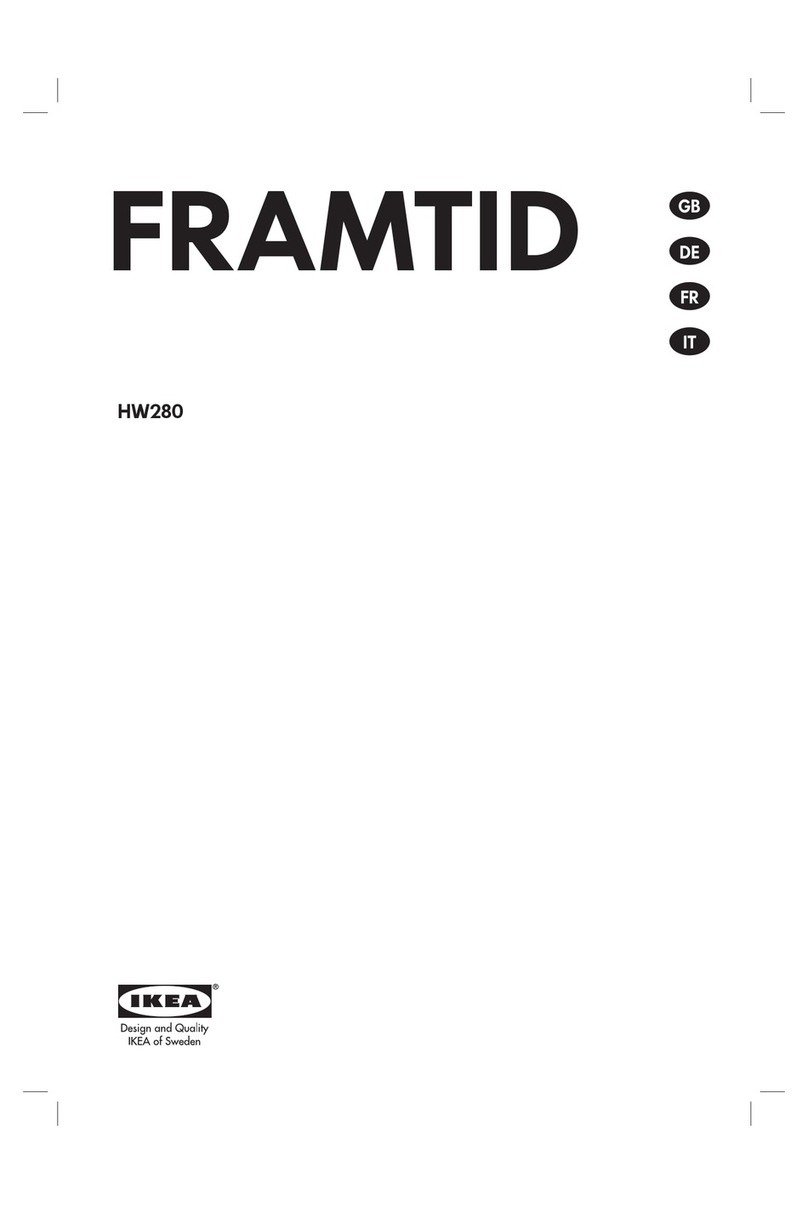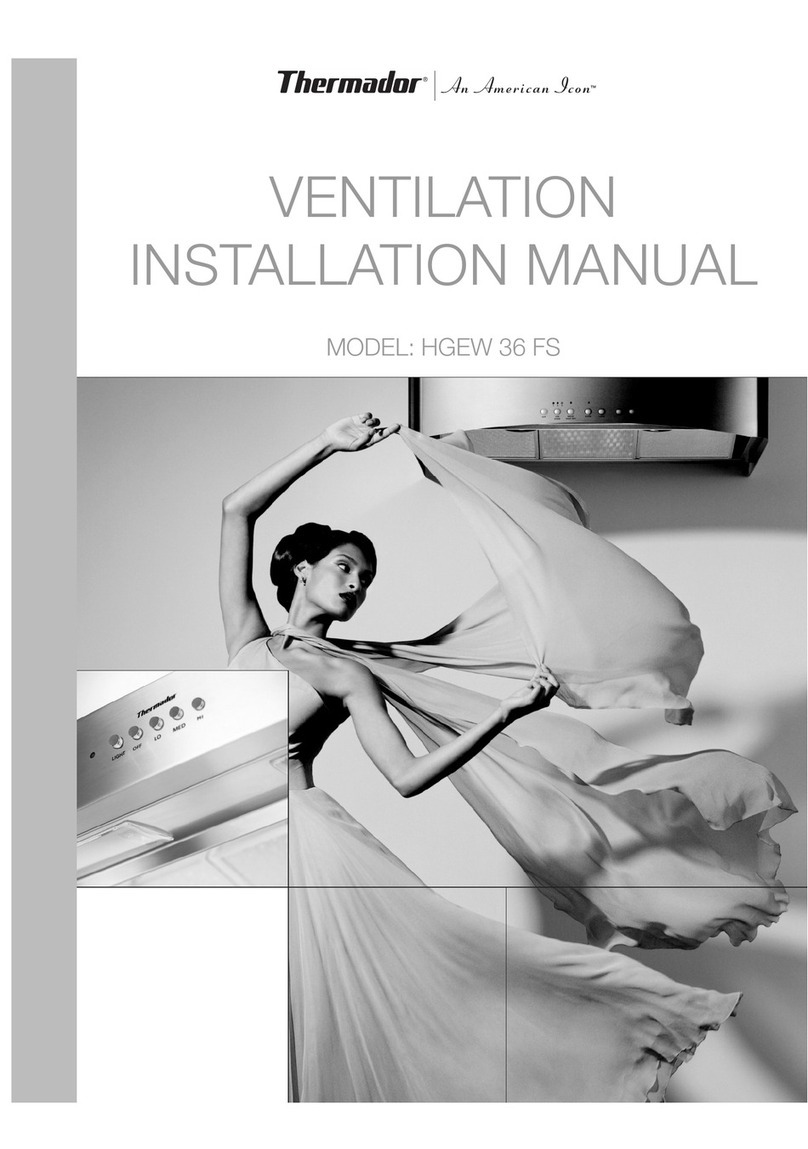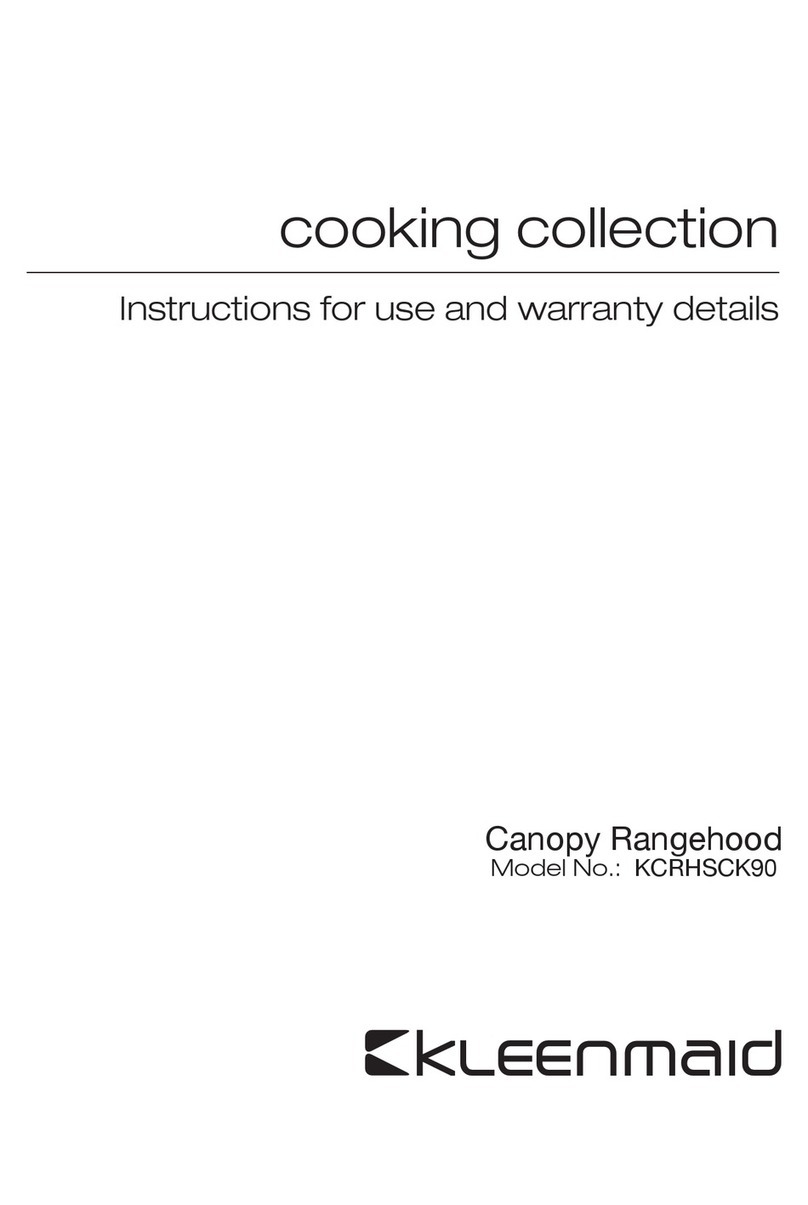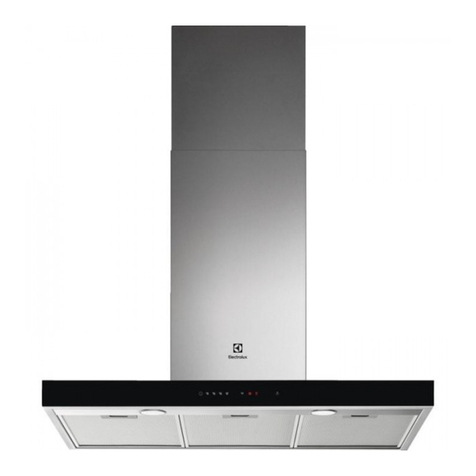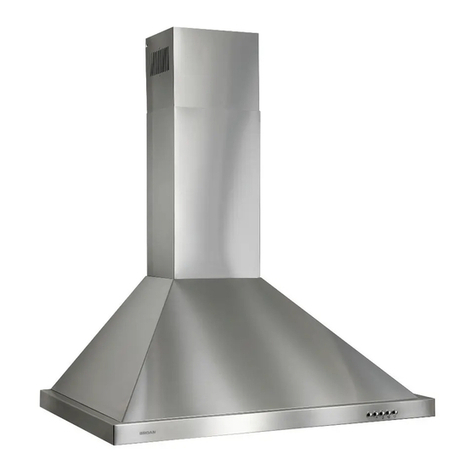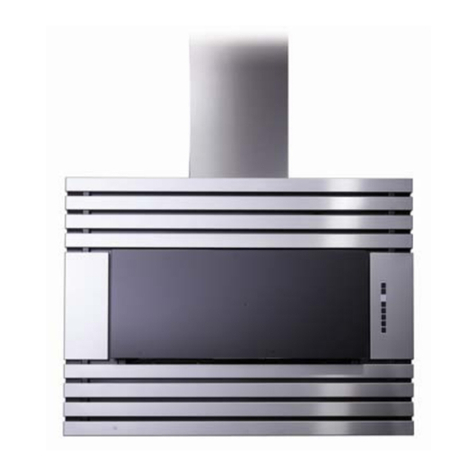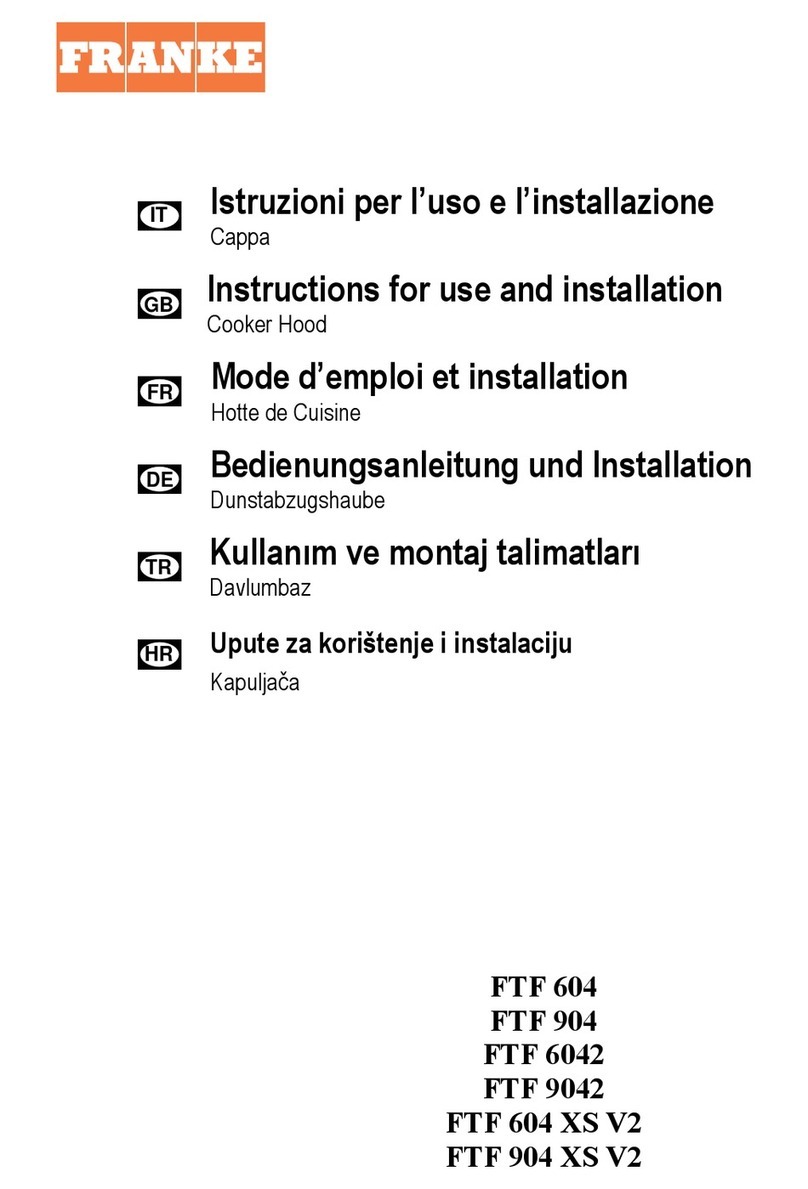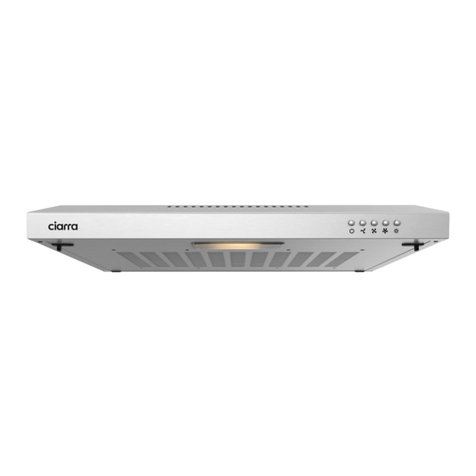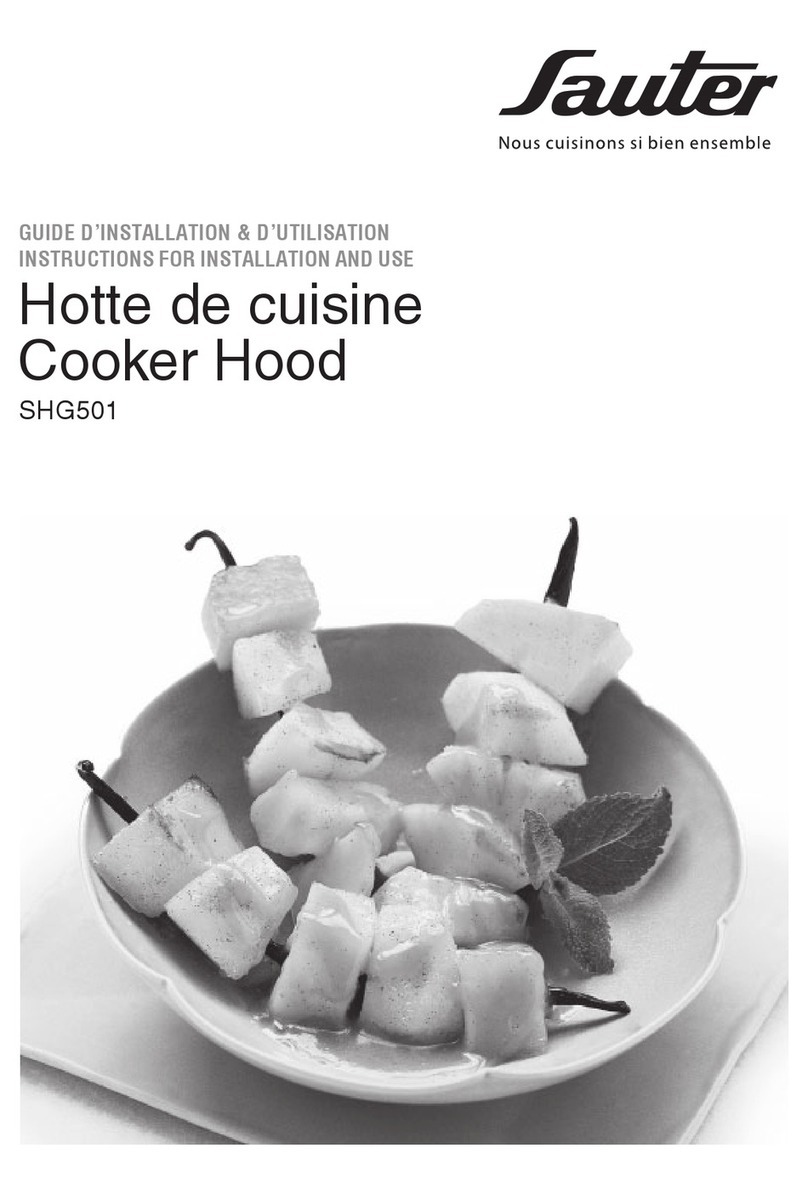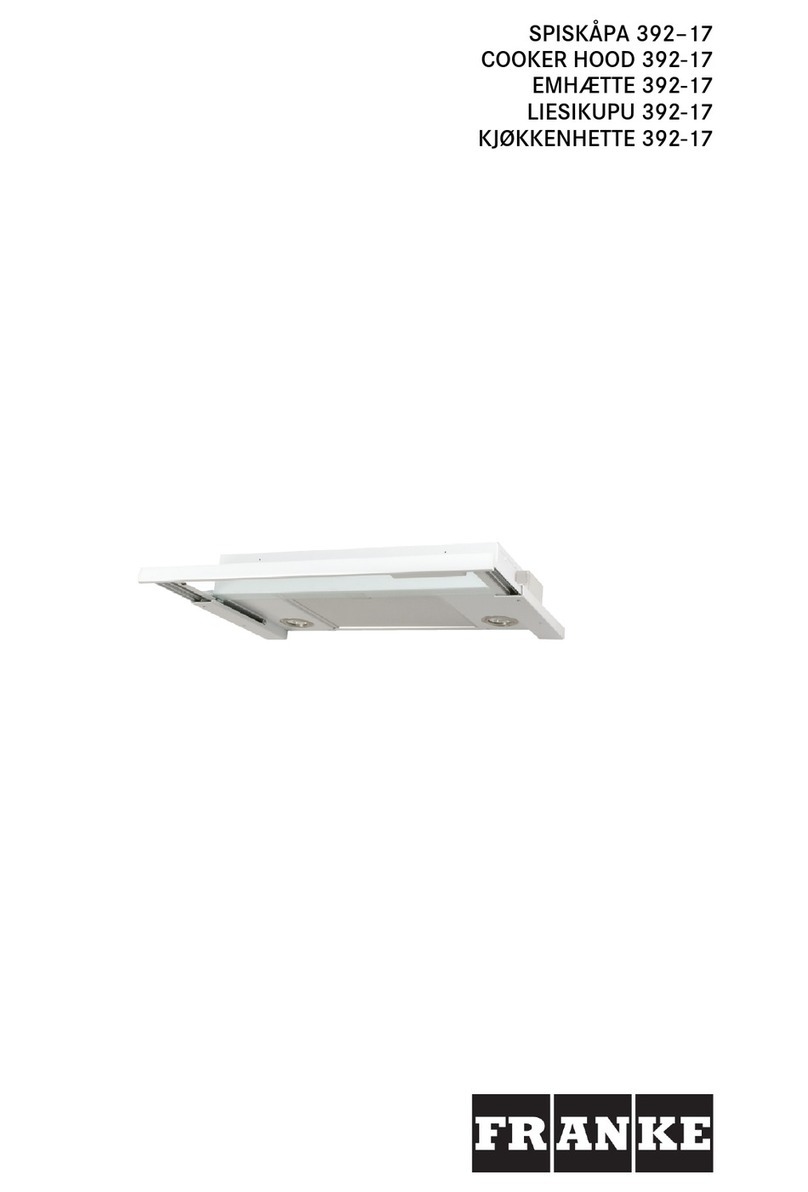7
Consult the designs in the front pages referenced in the text by
alphabet letters. Closely follow the instructions set out in this
manual. All responsibility, for any damages or fires caused by not
complyingwiththeinstructionsinthismanual, aretheresponsibility
of the user.
TheRangehoodmustbeplacedataminimumdistanceof50cmfrom
the cooking plane for electric cookers and 65cm for gas or mixed
cookers.
The hood can be installed above these heights but for optimum
performance it should be installed at the distance quoted for the
appropriateheatsource.
Do not tile, grout or silicone this appliance to the wall. Surface
mountingonly.
ThehoodisequippedwithatopairoutletBfordischargeoffumesto
theoutside (Ducting version –exhaustpipeand pipe fixingclamps
notprovided).
If it is not possible to discharge cooking fumes and vapour to the
outside, the Rangehood can be used in the filter version, fitting an
activated carbon filter and the deflectorF
onthesupport(bracket)G,fumesandvapoursarerecycledthrough
thetop grilleHbymeans ofanexhaust pipeconnectedto thetopair
outletBandtheconnectionringmountedonthedeflectorF(exhaust
pipe and pipe fixing clamps not provided).
Themodelswithnosuctionmotoronlyoperateinductingmode,and
must be connected to an external suction device (not supplied).
ExpansionwallplugsareprovidedtosecuretheRangehoodtomost
types of walls/ceilings. However, a qualified technician must verify
suitabilityofthematerialsinaccordancewiththetypeof wall/ceiling.
The wall/ceiling must be strong enough to take the weight of the
Rangehood.
Do not tile, grout or silicone this appliance to the wall. Surface
mounting only.
Installation - Fig. 5-6-7-8
Preliminary information for installing the Rangehood
Duringelectricalconnectionensurethepowersupplyisdisconnected
at the domestic main switch.
1. AdjustextensionoftheRangehoodsupportstructure,asthefinal
height of the Rangehood depends on this, and remember that
withinstallationcompletedtheRangehoodmustbeatleast50cm
above the cook-top for electric cookers and 65 cm for gas
cookers.
2. Fix the two sections of the structure using 8 screws.
3. Place the ceiling hole diagram directly above the cook-top (the
centerofthediagrammustmatchthecenterofthecook-topand
theedgesmustbeparalleltothesidesofthecook-top–theside
of the diagram with the wording FRONT corresponds to the
control panel side). Prepare the electrical connection.
4. Drillasshown(6holesfor6wallplugs–4plugsforfixture),screw
the outer screws leaving a space of about 1 cm between the
screw head and the ceiling.
5. Fit an exhaust pipe inside the truss and connect it to the motor
compartment connection ring (exhaust pipe and fixing brackets
arenot supplied).
6. Hook the frame onto the 4 screws (see step 4).
CAUTION!Thesideofthetrusswithconnectionboxcorresponds
to the side of the control panel with Rangehood assembled.
7. Tighten the 4 screws.
8. Insertandtightenanother2screwsintheremainingfreeholesfor
secure fixing.
9. Carry out the electrical connection to the mains power supply,
only turn on the power supply upon completion of assembly.
10. Forextractorversions(10A),connecttheotherendoftheexhaust
pipe to the flue.
For filter versions (10F), fit deflector F to the truss and secure it
tothebracketsuppliedusing4screws,thenconnecttheexhaust
pipe to the connection ring located on the deflector.
11. Remove the fixing tabs placed on the lower part of the chimney
flue, set aside the tabs and screws.
12. Apply the tabs to the inside of the upper section of the chimney
flue using one screw for each tab.
13. Fixtheuppersectionsofthetelescopicchimneyflue(13a)tothe
pylon(13b).
The upper sections are recognizable by the air exit perforations
for use in the filter version.
14. Blockthesectionswith2screws(14a)tobeinsertedonthetabs
already mounted on one section of the chimney flue (14b – see
also the mounting sequence 11 -12).
15. Remove the grease filter and slide in the lower section of the
Rangehood(duringthisoperationslightlywidenthetwosections
to ease the insertion).
The front side of the Rangehood is recognizable by the slit
openingprovided for the controlpanel.
Attention! During this operation ensure to extract the control
panel plate and the electrical connection cables for the lamps
through the slit opening.
16. Fix the lower section of the Rangehood to the pylon from the
bottom using 6 screws (16a), and on the sides using 4 screws
(16b).
17. IntroducethecablesCONNECTEDtothelampsandconnectthe
control panel to the plate.
ATTENTION! THE PLATE CABLE CONNECTOR IS
PROVIDED WITH A SIDE PIN THAT MUST COINCIDE WITH
THE PERFORATION FOUND ON THE SIDE OF THE
CONNECTORLOCATED ON THEBACK OFTHE CONTROL
PANEL.
18. The double sided adhesive tape supplied should be cut into 8
segments,then remove the protectioncoveringfrom both sides
andapplythesegmentsclosetothescrewsthatfixthe chimney
flues to the structure (see illustration for correct positioning).
19. Applythe4masks(supplied)tocoverthefixingpointsofthelower
sections of the chimney flue (ATTENTION THE MASKS FOR
THELOWERCHIMNEYFLUEARERECOGNIZABLEBYTHEIR
NARROWER WIDTH).
Thewidermasksare tobeusedfortheupperchimneyflue, and
should be cut to size.
20. Hook the control panel to the opening slit so that the ON/OFF
light switch is facing downwards.
Remount the grease filter, turn on the power supply via the central
electrical panel and check that the Rangehood functions correctly.
Only for products supplied in stainless steel and aluminum:
Removetheprotectivecoveringtakingcarenottodamagethemetal
andfinish (glazing).
Electrical connection
The electrical tension must correspond to the tension noted on the
labelplacedinsidetheRangehood.Connecttheelectricalplug,where
provided, to an easily accessible outlet in conformity with local
standards in force.
Where an electrical plug is not provided (for direct connection to
electricalnetwork)placeastandardsapprovedbipolarswitchwithan
aperturedistanceofnotlessthan3mm(accessible)fromthecontacts.
INSTRUCTION ON MOUNTING AND USE

